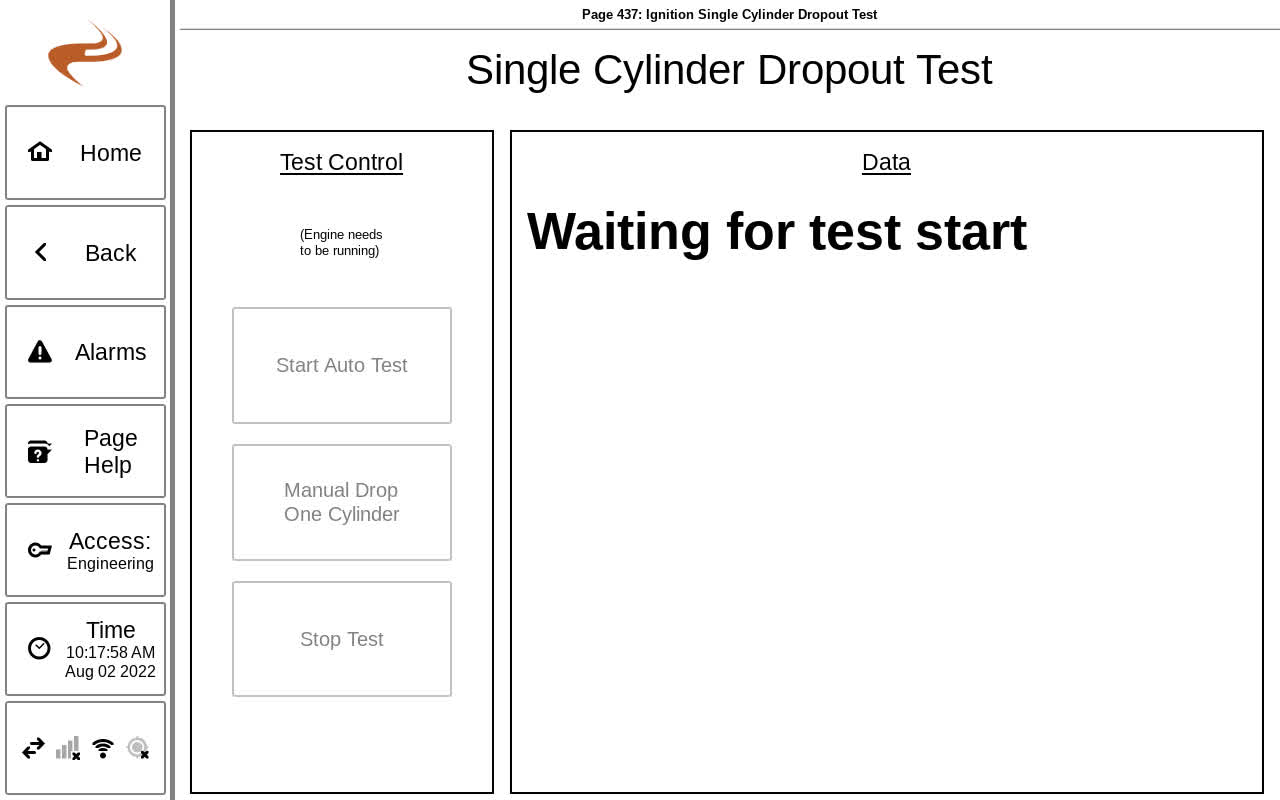Ignition Single Cylinder Dropout Test
The ignition has the ability to run briefly without firing a single cylinder. This can be used to verify that each cylinder is supplying a similar amount of power to the engine.
WARNING:
Running without firing one cylinder sends unburnt fuel to the catalyst, which is hard on the element. Cylinder dropout tests should only be run briefly, with plenty of time between tests running normally to make sure unburnt fuel is purged out of the system. The test should be used with a moderate load, if the load is too high the engine will probably stall.
The single cylinder dropout test screen is found by navigating from the ignition home page to "Setup and Testing", "Testing Pages" category, then "Single Cyl Dropout Test". To use this test, an EIM version of 2.00 or higher and an ignition version of 1712 or higher are required.
Single Cyl Dropout Test Screen (Shown during test)
Manual Test
Once the engine is running, a manual test can be used by clicking 'Manual Drop One Cylinder'. A dialog will be shown to choose a cylinder, after which the engine will run without firing that cylinder for about 5 seconds. After the test the average RPM and manifold pressure during the test will be shown.
During the test, selecting 'Stop Test' will abort the test.
Auto Test
If an EMIT governor is present on the engine, the 'Auto' test can be used. The ignition will perform the following sequence during this test:
- The governor will be commanded to hold a fixed throttle position, followed by a short delay
- Each cylinder will be dropped out for about 4 seconds each
- At the end of the test, the governor and ignition will return to normal operation
During the test, the test can be stopped by selecting 'Stop Test'. Also, if the engine stops during the test it will be aborted.
After the test, a graph of the RPM and MAP during the test will be shown. (Note: A MAP sensor can be connected to the ignition, governor, or AFRC to get MAP information). This makes comparing cylinder power easy.
Since the throttle is fixed during the test, the RPMs will change based on how much power is lost as each cylinder is dropped. If one cylinder in particular has a higher engine speed during its dropped period, this means that the cylinder was doing less work than the average of the others. This could be due to poor combustion (plug, ignition, etc.) or poor compression (valves, etc.).
